
EXHIBITION
PLAN
![]()
Glömp10 exhibition will an experiment on 3-dimensional comics.
The task is to use three dimensions effectively in comic storytelling.
Though making experiments the main purpose is to produce valuable comic
content. Along with the 3D comics the exhibition will contain animations
and music. All the works are exclusively made for the exhibition.
For the exhibition we will be prepare a new issue of Glömp, this
time only as an English edition. The 10th publication includes representations
of the exhibition works, exclusive material and articles.
Below here we've gathered some samples of our plans. Note that the examples
presented here are rough sketches. Their purpose is to give a glimpse
how three dimensions can be taken advantage when telling a story in comic
form. As the artists are encouraged to go beyond what you see here the
result in the end may be something completely different.
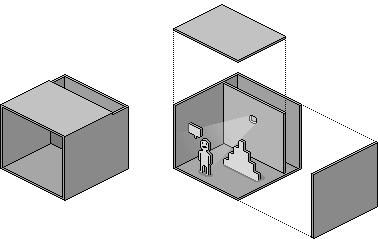
Traditional comic panels are built inside boxes.
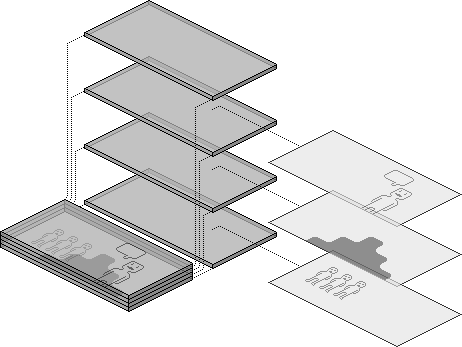
The image consists of multiple layers in-between glass plates. The whole thing is put on a light box.
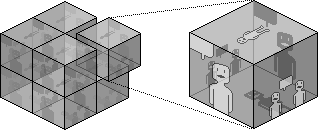
The comic can be read differently depending on which side of the cube it is read.
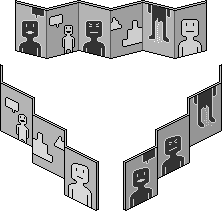
The story changes depending on the direction it's being observed. The work is meant to be hanged in a narrow space such as corridor.
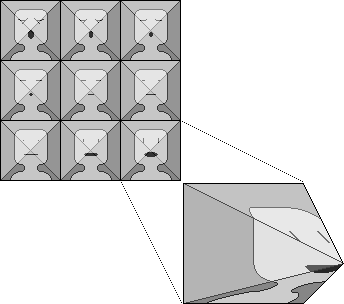
The comic seems 2-dimensional when observed from front. However, the panels are spikes that dash towards the viewer. The story presented takes advantage of this 'illusion of danger'.
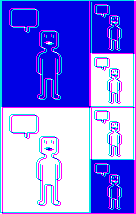
The task is to use effectively old 3-dimensional tricks in print.
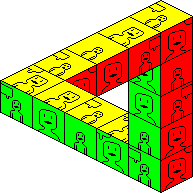
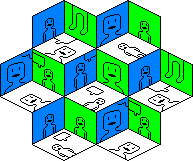
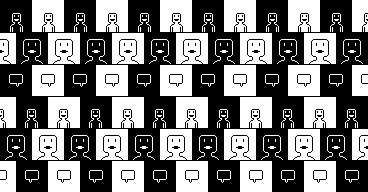
The task is to pick-up a traditional optic illusion and make it to serve storytelling.
<<< FRONT PAGE